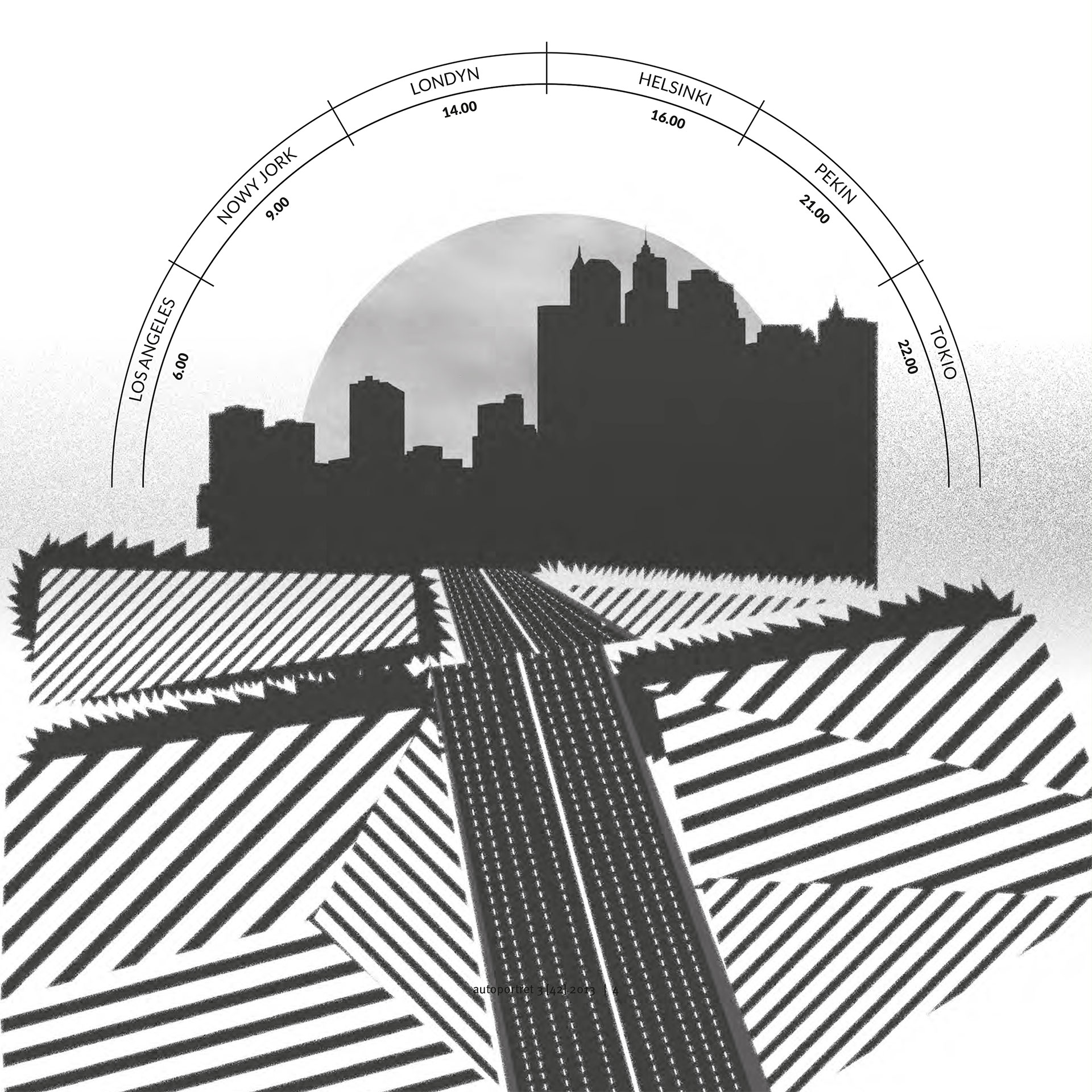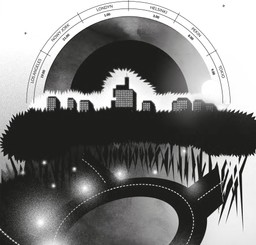We are currently going through a transformation whose consequences we have not yet learnt to control. Space is increasingly becoming a sensual expression of our contradictions and paradoxes.
Everyday language keeps on surprising us. We often use the prefix ‘without’ (sans). We speak of those ‘without homes’, of people sans papier1, and since we know for certain that their situation is problematic, we are led on to believe, as if it were obvious, that having a permanent place of residence and valid documents is a sufficient condition for happiness.
Other examples might easily prove the opposite. The richest people in the world acquire more and more residences. They own temporary homes on different continents, they sail their own yachts and enjoy themselves in luxury hotels all over the world. They have documents, to be sure, and yet they are so self-confident and so confident in their identity that they hardly realise they are actually showing those documents when a need arises. They might be said to accumulate benefits: places of permanent residence, identity cards and credit cards.
Having said that, I would claim that the fact that the most affluent collect residences and exude self-confidence proves that the ideal of individual life is not necessarily that of getting stuck in one place like a mollusc to a rock, or having the means to prove your identity when asked to show your papers; quite the opposite: it is a genuine freedom of movement while remaining relatively anonymous. The magnetic force of the 19th century cities on runaway villagers, and of great cities in the North on migrants from the South, was born out of the very same need. Undoubtedly, it is essentially illusory, and yet it must be considered by all who ask themselves the question about the ideal city life of our time.
The city is expanding ceaselessly. The majority of the world’s population lives in the city and the trend is irreversible. Global urban drift is transforming the city. What kind of city do migrants flock to these days?
The phenomenon of global urban drift corresponds more or less to what we call globalisation, to denote free market, economic and financial interrelations, development of means of transport and advances in e-communication. From this point of view, the world may be called one giant city. The ‘world-city’, as I proposed to refer to it[2], is characterised by mobility and uniformity. On the other hand, big metropolises are sprawling and abound in all types of diversity (ethnic, religious, social or economic), including divisions inherently present in them. We can therefore contrast the ‘city-world’, with its divisions, nodes and disparities with the ‘world-city’, which provides the former with a global context and places its aesthetic and functional identification marks emphatically in several key points in the urban landscape, such as towers, airports, shopping centres or amusement parks.
The more a big city sprawls, the more ‘decentralised’ it becomes. Visited by tourists coming from other places, historical centres become museums and areas of all kinds of consumption. Prices are high here, and city centres are inhabited, more often than not, by the wealthy, who frequently happen to be foreigners. Production and sometimes also cultural activities move extra muros. Means of transport are the focal problem of an urban agglomeration. Distances between places of residence and places of work are often considerable. Urban tissue stretches along roads, rivers and coasts. In Europe suburbs are getting closer, are merging and mixing; it may seem that with the spread of ‘urbanity’ we are losing the ‘city’ itself. Decentralisation of cities whose elan vitale is moving beyond administrative borders; habitats whose private interiors are linked with the outside world through television and the internet; finally, individuals themselves who are constantly teleported outside themselves by electronics – all these factors favour conquest of space, which, paradoxically, is often related to dispossession.
How to recover the lost city?
In the global world an answer may be expressed in spatial terms: we must re-think localness. Contrary to illusions disseminated via communications technologies, from television to the internet, we live where we live. Ubiquity and immediacy still remain metaphors. It is important to perceive means of communication as they really are: means to facilitate life, not to substitute for it. From this perspective, the task we should accomplish is enormous. It is to avoid situations when information and image overload will cause new forms of isolation. Solutions to halt this trend, which is already perceivable, will have to be spatial, local and, openly speaking, political, in the broad sense of the word. How to reconcile the sense of place and the freedom of non-place in urban space? Is it possible to rethink the concept of the city in its entirety, and of housing in particular?
The city is not an archipelago. Le Corbusier’s illusion of the city, whose centre was supposed to be a habitat and a unit of cohabitation, brought in the barriers of new suburbs from which trade and services, originally intended to turn them into ideal spaces for living, soon emigrated. What was neglected was the need for social relations and contact with the outside world; this is what ‘young suburbans’ express in their own way, for example in Paris where they move regularly from their bleak housing estates towards the districts of Champs Elysées or Châtelet-Les Halles, which lie in the heart of the historic city and are also symbols of consumer society.
Perhaps one day our planet will look like one complete urban complex. We are starting to look at it that way, since we celebrate works by several eminent architects, whic are wellknown all over the world, or follow advances in e-communication technologies of Paul Virilio’s ‘virtual meta-city’. It is to be hoped that by that time we will have found a way to supply this giant world-city with energy that is necessary for it to function harmoniously. It should also be said that the measure of the success or failure of the project, whether it be a utopia realised or a programmed end of the world, will be human relations management; in other words, our ability to reverse the current process of the growing gap between the rich and the poor, between the educated and the uneducated. The energy necessary to carry out this major project – the only true effort worth making if each individual is necessarily assigned the idea of cognition characteristic of the human species – is essentially mental energy and refers to the human being’s fundamental qualities: intelligence, will and imagination.
To many people, culture remains a close, intimate bond which has been in existence and is still perceivable in microscale in a given community, its works and its landscape. The existence of such communities is becoming increasingly difficult and they can hardly envisage their place in that planetary ‘post-cultural’ world whose emergence they are witnessing daily. The hypothesis we would like to propose here is that an anthropologist can usefully contribute to the reflection on the necessity to recentre human activity – not in order to negate new opportunities ahead of the humanity but so as to confront them without nostalgy, since they have always been among questions raised more or less directly by various cultures and by several philosophical precursors. It is high time to embrace what is happening on ‘our’ planet and to refocus on what is vital – on cognition – when faced with hitherto unknown threats of the present time.
Current efforts to protect the world by designating ‘human heritage’ sites and establishing ‘natural parks’ are, in a sense, all aimed at that. However, if they are not accompanied by a major educational effort, they may be lost in our world of images, as one out of many existing forms of consumption. Hence, the change of scale, which is reflected in newly emerging landscapes (including the landscape of the planet as such) – landscapes that in a sense recapitulate the history of humanity – may be perceived as a source of mixed up questions, anxieties and dreams.
Polish translation by Aleksandra Wojda
English translation by Anna Mirosławska-Olszewska











